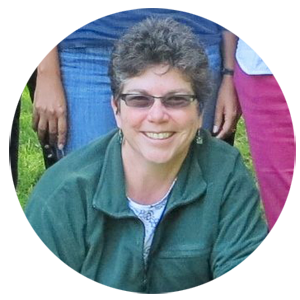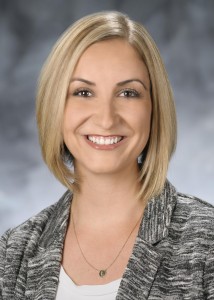Category Archives: communication
Development at NCEAS, Fundraising for Ecology [Jan 13, 2016]
This round-table will be led by Jeanne Kearns who is the new Director of Development at NCEAS. Jeanne will be discussing what development is, in the context of NCEAS and how the NCEAS community can contribute to its development. In particular, Jeanne will present on:
Director of Development
National Center for Ecological Analysis and Synthesis
University of California Santa Barbara
A roundtable on roundtables
We have had a few informal discussions here at NCEAS on round-tables and the form/structure that they could take in order to be both engaging and useful. There is a dichotomy apparent, between ‘talks’ and ‘discussions.’
The more one-way, information providing ‘talks’ are a very useful way for researchers in different fields to explain and learn about on-going work, though time constraints generally mean that this leaves less room for questions and discussion.
On the other hand, more participative ‘discussions’ that address a broad topic, and have a loose structure to help keep them moving are a very good way for all of us to brainstorm about common ideas and concepts and hopefully leave us with more ideas (and questions!) than we started with!
The question then is – how do we strike a good balance? On Wednesday, February 18th, we will have a round-table session on…round-tables(!) to get ideas and brainstorm and discuss this.
As very good food for thought in preparation, here are some tips from Chris Lortie on how to provoke thought and and manage discussions:
http://www.christopherlortie.info/enabling-scientific-discourse-how-to-make-a-square-table-round/
Nailing Your Elevator Speech with the Message Box
Nancy Baron sent a message in advance of her NCEAS Roundtable presentation next Wednesday (Jan 23). She writes:
Hi Folks,
Next week at the NCEAS Roundtable I am going to teach you how to nail your elevator speech about your research by using a simple but powerful tool called “the message box.” Some of you may know and already use this so this might be a refresher. And for those of you who aren’t familiar with it — it’s incredibly useful.
The message box takes all your complex knowledge and helps distill it into the key messages that journalists, policymakers, and everyone else who are not experts need to understand your work. It is a guide to make sure you stay on topic and make your important points during a conversation or interview. Or it can just help you cut to the quick at a party to explain what you do and why it matters.
So here is a copy of the box and a couple of examples, one by Boris Worm and another by former NCEAS post doc Ellen Damschen. You might want to give this a whirl before Weds because we will be rushed in an hour. This will help you get a lot more out of our short time. You should have a particular audience in mind — say a journalist as they have to be able to understand what you say well enough to convey it clearly themselves. (See the sheet.)
Notice that when you start your message box, you will probably write a lot. That’s ok, it’s part of the brainstorming process. Next, work on cutting it down to the most important idea you want to communicate in each section of the box.
On Weds, I will explain this more fully. Hope to see you then.
all best,
Nancy Baron
See you at the Roundtable!
Should ecologists get involved in advocacy?
Today we will be having a Roundtable to discuss issues involving the role of scientists in advocacy. I typically don’t get any feedback after advertising a Roundtable, but this topic generated a mixture of responses ranging from “that sounds interesting, I will be there” to “this topic has been talked to death and there is no resolution in sight” (I’m paraphrasing here). So, it seems as though people have strong opinions, which should make for an interesting discussion. To access papers relevant to the discussion visit the NCEAS plone site:
https://groups.nceas.ucsb.edu/lounge/roundtable/20130111
Storytelling and communication through environmental media: Blue Horizons films
I was pleased to have the opportunity to host Richard Hutton and LeeAnne French, the Executive and Associate Directors of the Carsey-Wolf Center and two of the minds behind the Blue Horizons film program, for a Roundtable last week. It was very fun to be able to show this year’s Blue Horizons films for the NCEAS community, and especially great to join into the conversation that we had with Richard and LeeAnne.
Richard and LeeAnne shared some great advice for those of us interested in communicating the science relevant to environmental issues, several of the things they mentioned really stuck in my mind. We discussed:
- the importance of knowing your audience and tailoring your message for the particular audience you’re trying to reach
- the way a nuanced presentation of a variety of cultural, societal, economic, etc. perspectives on an environmental issue can help the audience move beyond their established positions and engage more deeply with inherent complexities and competing points of view
- the powerful and honest way people can express their thoughts and feelings about an issue when trust between interviewer and interviewee has been established
- the importance of casting when creating environmental media
- the value of storytelling as a communication approach
Richard also recommended a book for those interested in learning more about how to improve communication through storytelling: The Storytelling Animal by Jonathan Gottschall. If any of you are planning to read it (I am) and would like to discuss afterward, please let me know and I’d be happy to join you.
Thank you, Richard and LeeAnne, for taking the time out to talk with us! We appreciate your willingness to share some practical tips we can use as we think about how to improve our communication efforts.



